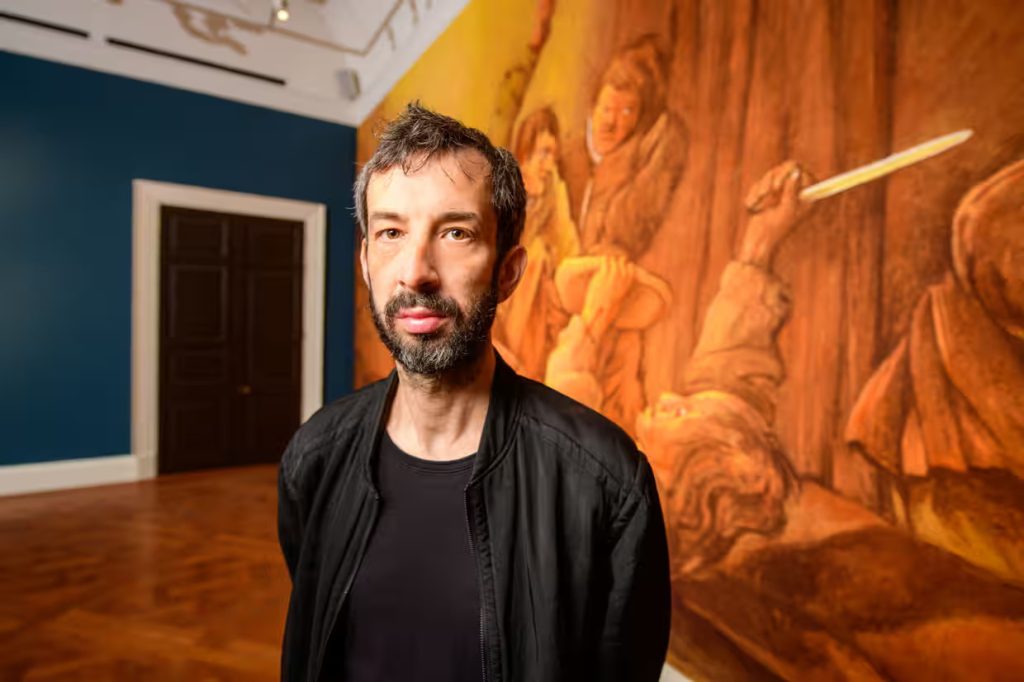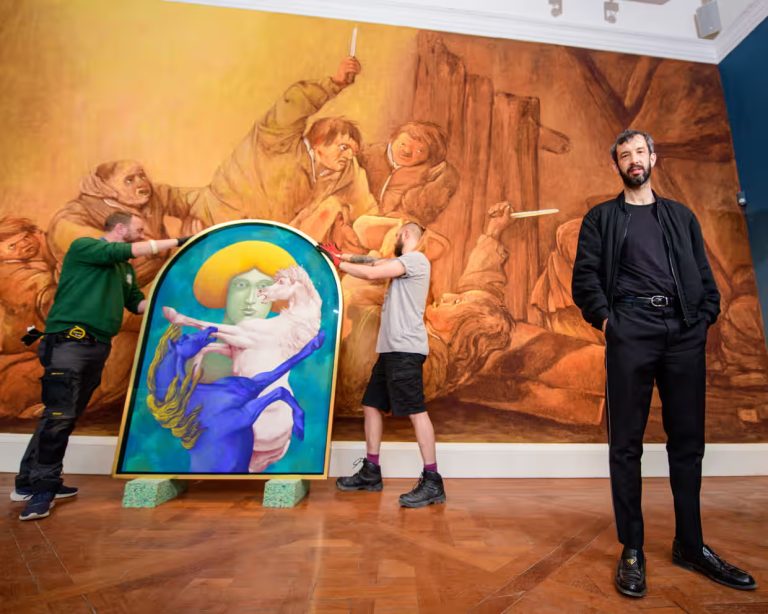Once Chased for Street Art, Nicolas Party Now Fills Museums with Murals
There was a time when Nicolas Party’s vivid graffiti-style works earned him more police attention than praise, as he tagged trains and buildings across Europe with his bold, distinctive street art. Today, the same creative energy is welcomed by prestigious galleries and museums eager to showcase his imaginative murals.
His latest creation—a striking pastel mural—now covers an entire wall of the Holburne Museum in Bath. Inspired by the dramatic works of a 17th-century Dutch painter and an 18th-century British master, the piece is his first large-scale mural in a UK gallery.
As final touches were being applied, Party expressed his excitement about working in such a storied venue. “It’s great to be in a grand place like this,” he said, referring to the museum’s setting in a stately late-18th-century building that houses works by artists such as Thomas Gainsborough and George Stubbs.
For this project, Party drew inspiration from A Brawl Between Peasants, a small oil painting by Dutch artist Benjamin Gerritsz. Cuyp—known for his allegorical scenes and landscapes influenced by Rembrandt. Over four days, Party translated the painting’s chaotic energy into a sweeping mural rendered entirely in soft pastel, filling the gallery with a haze of color and dust.
A second, smaller work accompanies the mural. Painted on linen and also in pastel, it shows two horses reminiscent of George Stubbs’ animal studies, flanking a serene, ghost-like human face. This smaller piece, titled Portrait With Two Horses, 2025, now hangs at the center of the mural, partially covering the action and adding a layer of mystery and tension.
The mural itself, titled A Brawl Between Peasants, After Benjamin Gerritsz, 2025, continues Party’s exploration of classical influence and contemporary reimagining—turning a quiet museum wall into a dynamic site of historical conversation and visual drama.

The artist said he was drawn to the Dutch painting for its “grim, funny” theme—something far removed from traditional portraits or idyllic landscapes. “It’s more unusual,” he explained. While the mural closely mirrors the original, Party believes it becomes uniquely his through the addition of the second piece: the pastel image of two horses flanking a ghostly human face.
He wasn’t concerned that the central drama of the mural is partly obscured by this smaller piece. “I think my work becomes my work when I put the two together,” he said, emphasizing how the combination is key to his creative signature.
To execute the mural, a special chamber had to be built around the gallery wall to contain the process. The surface itself was prepped with a mix of acrylic paint, water, and sawdust to create a rough, sandpaper-like texture capable of holding the pastel. “That makes a little mess, and the pastel produces a lot of dust,” he explained. “That’s why we need to work in an enclosed space.” Using both hands, Party layers and rubs the pastel to create rich textures and subtle color shifts. “It’s quite tiring, so I alternate between both arms.”
This ambitious wall piece is the highlight of Nicolas Party: Copper & Dust, an exhibition featuring two galleries of smaller-scale works. These include bold landscapes, still lifes, and portraits—all created using oil on copper, a technique that adds depth and luminosity to the paintings.
Chris Stephens, director of the Holburne Museum, said the institution was thrilled to host Party’s work. “Nicolas’s deep engagement with art history, especially 17th-century Dutch painting and 18th-century pastels—both strengths of our collection—makes this the ideal setting for his work,” he noted.
Nicolas Party: Copper & Dust runs at the Holburne Museum from 12 May to 31 August.

